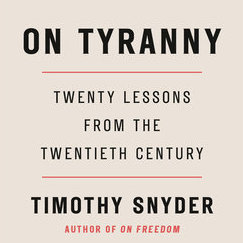
The Metropolitan Museum’s Roof Garden installation is an annual staged clash between the ephemeral and the permanent: a contemporary work that sits from April to November atop the Met’s neoclassical building, a Repository of Civilization, surrounded by the ever-mutating-yet-perennial New York City skyline.
This year’s installation, “Transitional Object (PsychoBarn)” by British artist Cornelia Parker, is a house—weathered, barn-red, clapboard, white trim, Second-Empire style with mansard roof, ironwork, and spindle-trimmed porch. Actually, not quite a house, a façade supported by scaffolding and using water tanks as ballast, though it looks quite real and solid. The red siding, corrugated tin roofing, and white trim were salvaged from a collapsed barn in Scoharie, N.Y. The specs call for the structure to stand up to a 100-mile-an-hour wind. On press preview day last month, it made its debut to blue sky and an acid-green display of new leaves and grass in Central Park.
Given the devouring pace of construction in New York, Parker’s work feels like a timely memorial to the quirky, the irregular, the old. It seems to have been reprieved from the path of a bulldozer and allowed to finish its days in dignity. As if to illustrate how blithely familiar silhouettes are sacrificed, a day after the Met opening, the New York City Landmarks Preservation Commission approved Brooklyn’s first 1,000-foot tower, which will feature bronze and black fins, to be built atop the landmarked Dime Savings Bank. “Enlightened urbanism at its best,” a commissioner was quoted as saying in The New York Times. Indeed.
In the late 19th century, mansard-roofed houses were built in thousands of American towns and cities. Large, ornate, and French-inspired, they stood for class and substance. When hard times hit in the early 20th century, many were broken into rooming houses or apartments. Edward Hopper painted multiple examples, the most famous of which is “The House by the Railroad,” in which an extravagant, brooding Second-Empire house—it would have had fine grounds once—overlooks the railroad tracks. I went to the Museum of Modern Art to see it for comparison. Ironically or fittingly, with MOMA under construction again, it’s in a dim, crowded corridor near the bathrooms—the lone Hopper of the museum’s collection on view, and looks as shopworn as a print of itself at a yard sale. Hopper’s painting was Alfred Hitchcock’s model for the Bates house in “Psycho,” hence the title of Parker’s work, which alludes to a darker layer of associations.

Despite its pretentious name, PsychoBarn isn’t pretentious—though the language surrounding such a prestigious commission and institution inevitably drifts in that direction. Transitional objects, a psychological term, are substitutes for something you’re trying to get over, for example, security blanket replacing Mom or nicotine gum chewed to quit smoking. Parker explains in an interview in the Met monograph for the installation that the house in Psycho subverts warm nurturing ideas about mother and home because of the terror that occurred there. Was Norman Bates’ house in Psycho a security blanket? A substitute for the mother he murdered after she began seeing another man and then impersonated? Despite multiple pages of explanation, the transitional function of the house in Norman’s psychosis remains impervious to me, perhaps because I’ve only seen Psycho once. That said, houses are enormously symbolic—especially traditional styles. They represent not only home and mother, but national and regional identity. How else to explain the perennial appeal of the Cape Cod—the quintessential American house?
Parker says she’s “drawn inexorably to the cliché.” Though its form, color, and materials are traditional American “Transitional Object (PsychoBarn)” doesn’t feel like a cliché. Instead, it seems to reach back to a time before such houses were associated with scary movies and bad things happening in showers and also before Hopper’s moody paintings began showing up on coffee mugs and tote bags. The Met’s monograph reproduces photos of the Psycho movie-set house from the outside and from behind, showing the scaffolding. This looks far scarier than the “PsychoBarn.” The scaffolding in Parker’s structure, proof of its fakeness, paradoxically lends another dimension of authenticity, scaffolds being part of the New York skyline.
The work is a little sinister—but not Psycho-creepy. Parker’s piece made me think not of abstractions like transitional objects, but of the time that old buildings represent in personal histories. My 95-year-old uncle has lived in the same building on the Upper West Side the entire span of my life. He has the same phone number, the first three digits of which correspond to its old telephone exchange, “TRAfalgar.” The building, with its ornate black iron canopy and grey marble lobby and peculiar smell, has never been my home, but I remember my grandparents, my aunt’s parents, her sister and brother-in-law, my own parents (young), and my cousin, brother, and myself as children here. It is the last extant family gathering place. A few years ago, the landlord decided to turn the building to condos. The last time I visited, a zippered plastic barrier sealed my uncle’s apartment. To use the elevator, you had to call the operator on a dangling walkie-talkie. My uncle lives in a big sunny corner apartment. As recently as two years ago, it was elegant. Sometime last year, circle of plaster about a yard in diameter fell from the living room ceiling, exposing the lathe. The paint is cracked and peeling. The landlord promises to take care of it. Neglect can be as expressive as a bulldozer. When a valuable piece of property is in transition, an old fellow gets in the way.
My uncle’s stately old Upper West Side apartment building is never going to sit atop the Met. (Now that would be an installation—and a transitional object.) By its simultaneous solidity and transience, Cornelia Parker’s house invokes a person and place I considered permanent, both accelerating toward the ephemeral.
Julia Lichtblau is book review editor of The Common.
Photos by author


